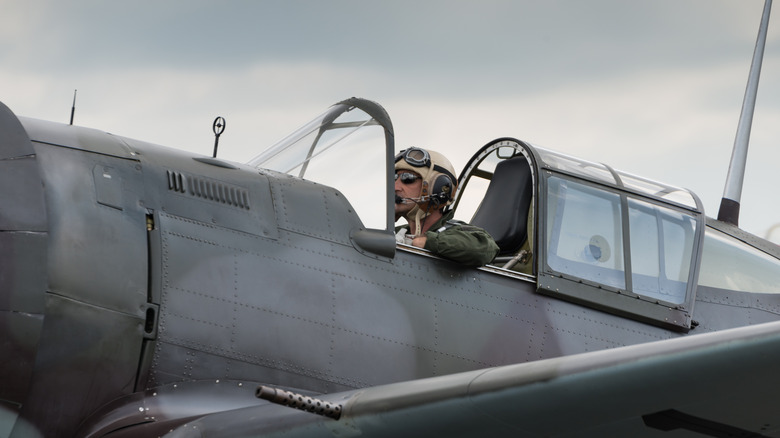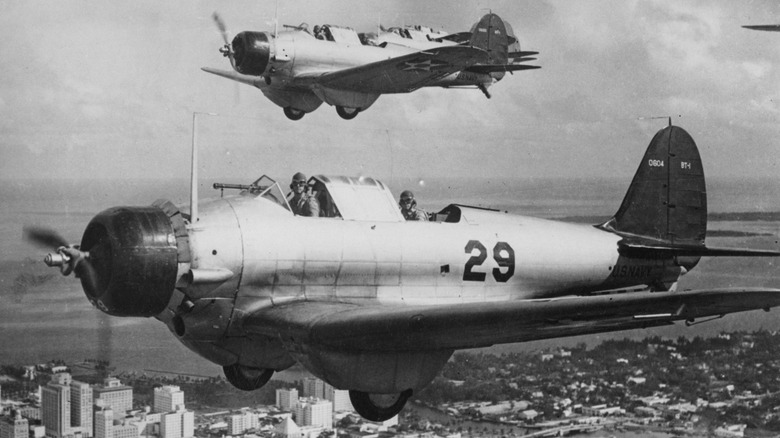
The F-35 Lightning II, the primary fighter jet of the U.S. military and its allies, can scream through the sky at up to Mach 1.6, or 1,200 miles per hour. It is literally impossible for today's pilots to fly the most advanced aircraft the world has ever seen ... with its canopy wide open. Fighter pilots back in World War II, at what was really still the infancy of fighter plane design, didn't have that problem mainly because they weren't capable of attaining anywhere near the same airspeed as today's aircraft.
Many of the experienced pilots at the start of WWII had earned their wings flying biplanes during the previous global battle (and never shot their own propellers), which were, by their very design, built with open cockpits. In 1914, the Royal Aircraft Factory built a single experimental S.E.4, which featured an optional molded celluloid cockpit cover. However, it was never used because the pilots were too wary of being confined within the plane's fuselage.
Given the mindset of these veteran pilots, most weren't too happy when canopies started becoming standard equipment. However, technological advances made these new and improved fighters exponentially faster and able to achieve higher altitudes, so pilots needed to wear masks that supplied them with supplemental oxygen to keep from passing out. These early planes didn't have air conditioning, and pilots were now sitting mere inches from massive heat-spewing engines while enclosed within a glass canopy, while the sun blasted them. At times, the heat was simply unbearable. Not only that, but early design flaws sometimes made it impossible to actually see through the canopy, so they would throw them open during flight.
Read more: 10 Of The Fastest Civilian Helicopters, Ranked By Top Speed
Why Some WW2 Pilots Flew With The Canopy Open

Such was the case with the Hawker Hurricane (one of the most overlooked fighters of WWII), the first monoplane fighter to enter service with Britain's Royal Air Force (RAF). It's credited with saving London during the Battle of Britain in 1940, but early versions had a peculiar design flaw that all but ensured pilots would fling open the canopy just to survive the flight.
The Hurricane's engine was mounted on the front of the aircraft and often leaked carbon monoxide fumes into the cockpit. This alone was enough to prompt many pilots to fly with the canopy wide open to avoid inhaling toxic gases. To make matters worse, the aircraft's main fuel tank was unarmored, and like the engine, it was located just in front of the cockpit, putting pilots at further risk in combat. If punctured during battle, the fuel would leak out into the wings, get absorbed into the wooden frame, and/or collect under the cockpit, adding even more noxious fumes into the enclosed area. But the Hurricane wasn't the only plane with flaws.
The Polikarpov I-16 was a snub-nosed aircraft often referred to as "Ishak" (donkey in English), thanks to its miniature size. It was the Soviet Union's first monoplane fighter, and it too was equipped with a glass canopy. Its maiden flight took place on December 30, 1933, likely making it one of the first fighters with an enclosed cockpit. However, the engine (which sat in front of the canopy) routinely spewed oil, which in turn covered the canopy, making it difficult for the pilot to see. Most were left off and flown open-cockpit style, à la the old biplane days. The original roof-mounted swing door canopy eventually gave way to the sliding canopy in subsequent years.
Want the latest in tech and auto trends? Subscribe to our free newsletter for the latest headlines, expert guides, and how-to tips, one email at a time.
Read the original article on SlashGear.











